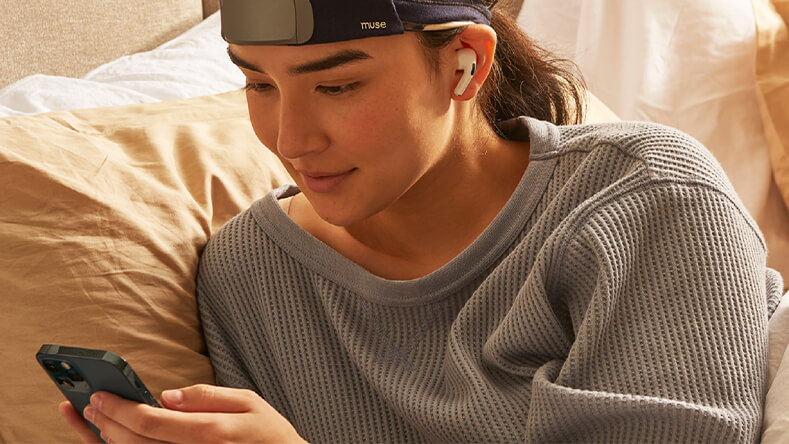The Double-Edged Sword: AI, Wearables, and the Future of Workplace Safety
For decades, the concept of a “zero-accident” workplace has been the ultimate, often elusive, goal for industries worldwide. From construction sites to manufacturing floors, the human element has always been the most valuable and the most vulnerable. Today, a new wave of technological innovation, spearheaded by artificial intelligence, advanced wearables, and collaborative robots (cobots), promises to transform this landscape. The vision is compelling: a world where predictive AI anticipates hazards, smart garments monitor worker well-being in real-time, and robots handle the most dangerous tasks. This is the exciting frontier discussed in the latest Wearables News and Robotics News.
However, as these technologies move from research prototypes to real-world deployment, a critical question emerges: Is their effectiveness proven, or are we being guided more by technological optimism than by rigorous, evidence-based results? The potential is undeniable, but the path to a demonstrably safer future is fraught with challenges, including data privacy, worker acceptance, and a significant gap in independent validation. This article delves into the promise and the practical realities of using next-generation technology to safeguard our workforce, exploring what’s needed to move from promising potential to proven protection.
The Promise: Envisioning a Proactive, AI-Driven Safety Ecosystem
The allure of technology in occupational safety lies in its potential to shift the paradigm from reactive incident reporting to proactive hazard prevention. Instead of analyzing why an accident happened, these systems aim to prevent it from ever occurring. This ecosystem is built on three core pillars: wearable sensors, intelligent monitoring, and robotic collaboration.
Wearable Technology: The Canary in the Digital Coal Mine
Modern wearables are far more than the consumer fitness trackers that dominate AI Fitness Devices News. In an industrial context, they are sophisticated personal protective equipment (PPE) infused with intelligence. Imagine a hard hat embedded with sensors that detect a fall and automatically send an alert with the worker’s location. Consider smart vests that, according to the latest Health & BioAI Gadgets News, monitor core body temperature and heart rate to prevent heatstroke in outdoor workers. These devices act as a personal safety net, constantly gathering data on both the individual and their environment. The latest AI in Fashion / Wearable Tech News highlights how these sensors are becoming seamlessly integrated into everyday work apparel, increasing comfort and adoption. Proximity sensors can alert workers when they are too close to heavy machinery or entering a restricted zone, a critical feature powered by breakthroughs in AI Sensors & IoT News.
AI-Powered Vision and Monitoring: The All-Seeing Eye
The second pillar involves leveraging the power of artificial intelligence to interpret visual data. The latest AI Cameras News isn’t just about higher resolution; it’s about intelligent perception. Strategically placed cameras running sophisticated AI algorithms can monitor a worksite 24/7. These systems, a key topic in AI-enabled Cameras & Vision News, can automatically detect if a worker is not wearing their required PPE, such as a helmet or safety goggles, and issue a real-time alert. They can identify environmental hazards like spills or obstructions that could cause a slip-and-fall incident. Advanced AI Monitoring Devices can even analyze worker posture and movements to flag ergonomic risks that could lead to long-term musculoskeletal injuries, a proactive approach that is revolutionizing industrial ergonomics.
Collaborative Robots (Cobots): The Helpful Hand
Unlike traditional industrial robots that operate in caged-off areas, cobots are designed to work alongside humans. This is a central theme in recent Robotics News and updates on AI Personal Robots. Their role in safety is twofold. First, they can take over tasks that are dull, dirty, and dangerous. This includes repetitive lifting that causes strain injuries, handling hazardous chemicals, or performing tasks in confined spaces. Second, they can act as an assistant, for example, by holding a heavy component steady while a human performs a delicate assembly task. This human-robot collaboration reduces physical strain and fatigue, two major contributors to workplace accidents. Even simple automated systems, like advanced Robotics Vacuum News shows, can improve safety by keeping work areas clean and free of debris without human intervention.
The Reality Check: Where Promise Meets Practicality
While the vision of an AI-powered safety utopia is compelling, the on-the-ground reality is far more complex. Organizations rushing to adopt these technologies often encounter significant hurdles that are less about the tech itself and more about its implementation, interpretation, and human impact.
The Data Dilemma: Drowning in Data, Starving for Insight
A single smart vest can generate thousands of data points per worker per shift. Multiply that by an entire workforce, and the result is a deluge of data. The primary challenge is converting this raw data into actionable safety insights. A sudden spike in a worker’s heart rate could indicate a medical emergency, or it could be a false alarm triggered by strenuous but safe activity. This issue of false positives can lead to “alarm fatigue,” where supervisors and workers begin to ignore alerts, defeating the system’s purpose. Furthermore, this data collection raises profound privacy and security questions. Who owns the biometric data? How is it stored and protected? These are critical concerns covered in AI Security Gadgets News. Ensuring data is processed efficiently, often using AI Edge Devices to analyze information locally rather than sending everything to the cloud, is key to managing both bandwidth and privacy.
The Implementation Hurdle: Technology vs. Human Factors
Deploying a new safety technology is not a simple plug-and-play operation. It requires a fundamental shift in workflow and culture. A major barrier is worker acceptance. If employees perceive wearables and cameras as tools for surveillance and micromanagement rather than for their personal safety, they will resist them. This “Big Brother” effect can erode trust and morale, creating new problems while trying to solve old ones. Effective implementation requires comprehensive training and transparent communication, a topic often explored in AI Education Gadgets News. Workers need to understand how the technology works, why it’s being used, and what the protocols are for responding to alerts. The most sophisticated AI Assistants News confirms that user experience and trust are paramount for adoption.
The Uneven Landscape of Research and Validation
Perhaps the most significant challenge is the lack of independent, large-scale research to validate the effectiveness of these technologies. Much of the available data comes from vendor-sponsored case studies or small-scale pilot programs. While promising, these often lack the scientific rigor to prove a direct and consistent causal link between technology deployment and a reduction in accident rates. As highlighted in many discussions around AI Research / Prototypes News, proving a negative—that an accident was prevented—is notoriously difficult. Without standardized metrics and peer-reviewed studies, it’s hard for companies to make informed decisions about which technologies offer the best return on investment for safety, and which are merely expensive gadgets.
Forging a Safer Future: A Blueprint for Responsible Innovation
To bridge the gap between potential and proven performance, organizations must adopt a strategic, human-centric approach to integrating safety technology. Simply buying the latest gadget is not a strategy; building a culture of safety enhanced by technology is.

Start with the Problem, Not the Technology
The first step should always be a thorough, traditional risk assessment. Identify the most frequent and severe hazards in your specific environment. Is the primary issue falls from height, collisions involving Autonomous Vehicles News-worthy forklifts, or ergonomic strain from repetitive tasks? Once the core problems are identified, you can evaluate technological solutions that directly address them. A construction site might prioritize fall detection wearables and drone-based site inspection, a topic of growing interest in Drones & AI News. A warehouse, on the other hand, might focus on AI cameras for collision avoidance and ergonomic monitoring, drawing lessons from the high-performance tracking seen in AI in Sports Gadgets News.
Prioritize Transparency and Collaboration
Successful implementation hinges on trust. Involve workers in the selection and piloting process from day one. Frame the initiative around a shared goal of ensuring everyone goes home safe. Be radically transparent about what data is being collected and, more importantly, what it is *not* being used for (e.g., disciplinary action or productivity tracking). Co-create clear data governance and privacy policies with worker representatives. This collaborative approach, where end-users become co-creators of the safety system, mirrors the user-centric design principles found in the development of AI Tools for Creators News. Establish a clear feedback loop for workers to report issues, suggest improvements, and share their experiences with the technology.
Embrace a Pilot-and-Scale Approach
Instead of a company-wide rollout, begin with a controlled pilot program in a specific department or on a single team. Define clear key performance indicators (KPIs) before you start. These shouldn’t just be lagging indicators like a reduction in incidents, but also leading indicators like a decrease in reported near-misses, an increase in hazard identification, or improved scores on ergonomic assessments. Use the pilot to gather real-world data, troubleshoot technical glitches, and refine your training and communication strategies. This iterative approach, similar to how users track progress with AI Sleep / Wellness Gadgets News devices, allows you to build a strong business case for a wider rollout based on your own validated results.
The Expanding Ecosystem: From the Factory Floor to the Smart Home

The innovation driving workplace safety doesn’t exist in a vacuum. It is part of a much broader technological ecosystem where advancements in one area often fuel breakthroughs in another. The principles of monitoring and response are universal, connecting the industrial world to the consumer world.
For instance, the technology discussed in Smart Home AI News and AI Kitchen Gadgets News, which uses sensors to detect smoke or water leaks, is based on the same fundamental IoT principles as industrial gas leak detectors. The computer vision that powers AI-enabled Cameras & Vision News on a factory floor shares a common ancestry with the technology in AR/VR AI Gadgets News and Smart Glasses News used for augmented reality overlays in surgical training. The sophisticated sensors in AI Pet Tech News that monitor a pet’s activity and well-being are not dissimilar to the lone-worker monitoring devices that ensure the safety of remote employees.
This convergence is accelerating. The voice-command technology from AI Audio / Speakers News is being integrated for hands-free operation of machinery. The advanced mobility and navigation algorithms seen in AI Personal Robots are informing the next generation of autonomous forklifts and inspection drones. The far-future concepts being explored in Neural Interfaces News could one day allow for seamless control of complex machinery. From AI in Gaming Gadgets News, which pushes the boundaries of real-time sensor fusion, to AI for Accessibility Devices News, which focuses on human-centric design, the lessons learned are cross-pollinating. This synergy means that a breakthrough in AI Phone & Mobile Devices News could lead to a more intuitive safety app, and advancements in AI for Energy / Utilities Gadgets News could produce more robust, long-lasting batteries for wearable sensors.
Conclusion: Cautious Optimism for a Safer Tomorrow
The integration of AI, wearables, and cobots into the workplace holds an undeniable and transformative potential to protect human lives. These technologies offer the promise of a future where we can predict and prevent accidents with unprecedented accuracy. However, this potential comes with a crucial caveat: technology is a tool, not a panacea. The current landscape is characterized by a great deal of hype and a scarcity of independent, rigorous validation. To move forward responsibly, we must temper our technological optimism with a healthy dose of critical evaluation.
The path to a safer future requires a collaborative effort. It demands that technology developers, safety professionals, academic researchers, and, most importantly, the workers themselves, work together. By focusing on solving real-world problems, prioritizing transparency and trust, and committing to an evidence-based approach, we can ensure that these powerful new tools are harnessed effectively. The goal is not merely to deploy more technology, but to build a stronger, more resilient culture of safety where innovation serves its ultimate purpose: to protect our most valuable asset, our people.










